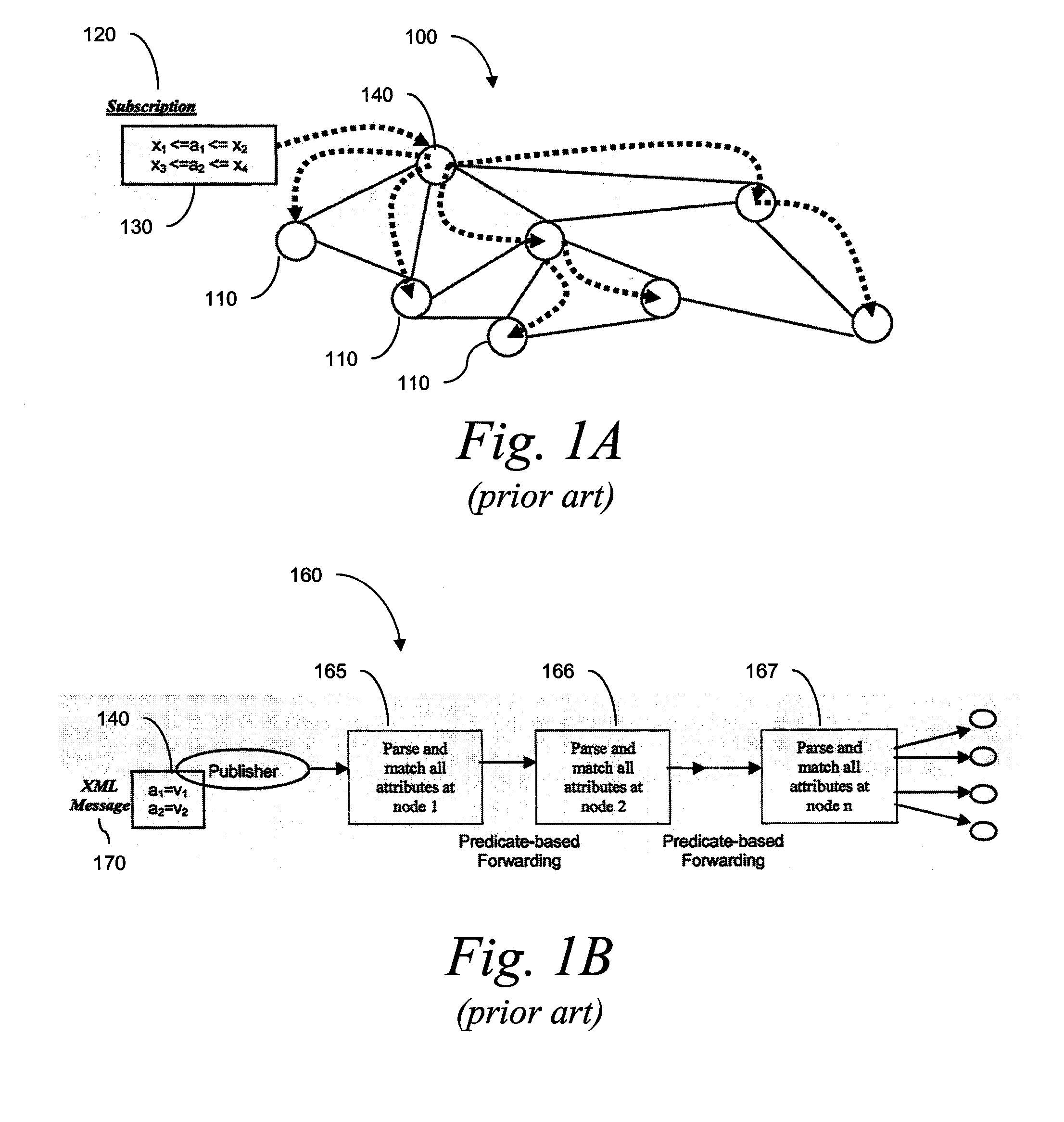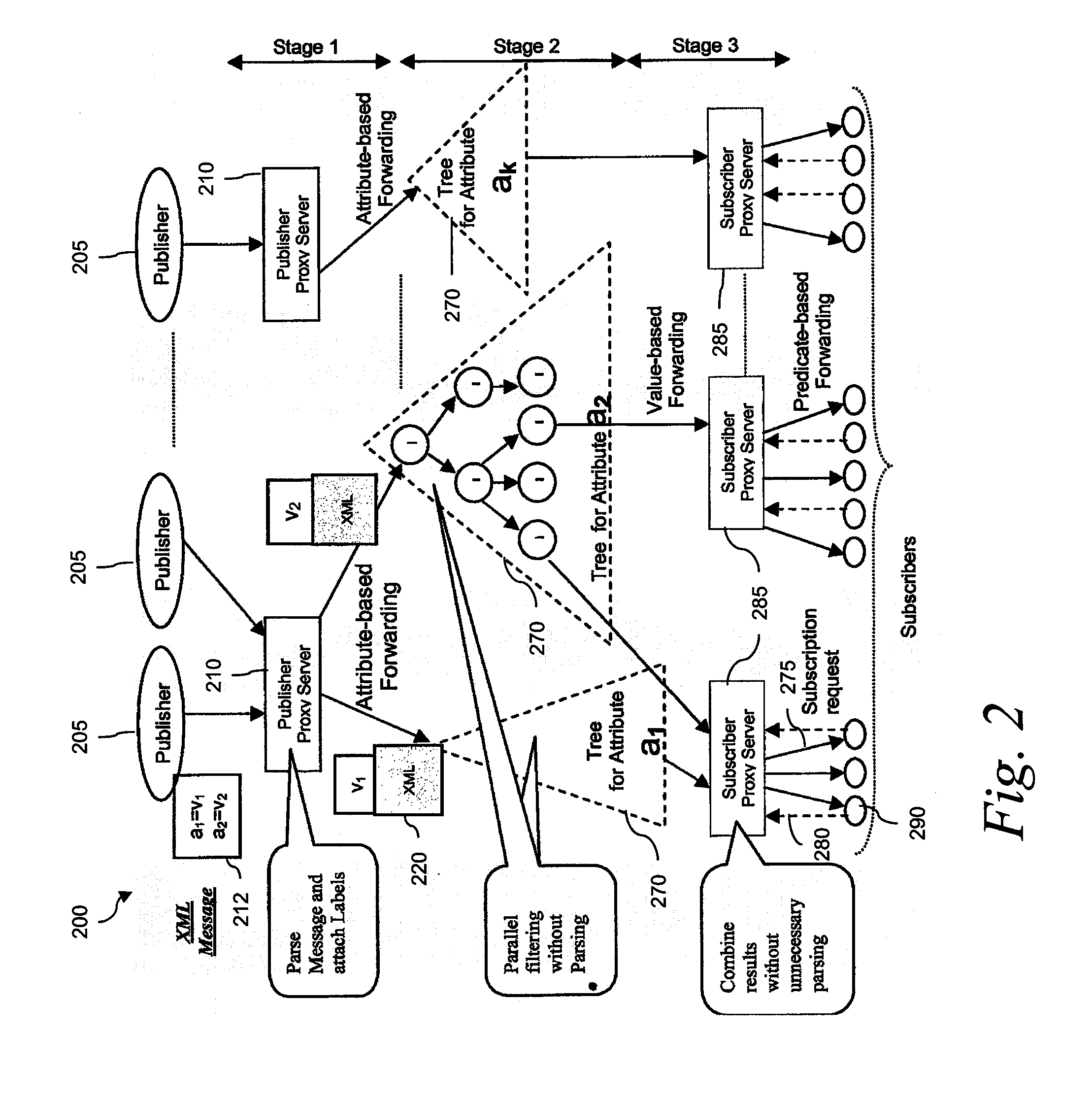Scalable Content Based Event Multicast Platform
a multicast platform and content technology, applied in the field of content-based information dissemination and distributed publish-subscribe systems, can solve the problems of limiting the scalability of the system, increasing the message processing latency, and high matching time per message in siena
- Summary
- Abstract
- Description
- Claims
- Application Information
AI Technical Summary
Benefits of technology
Problems solved by technology
Method used
Image
Examples
Embodiment Construction
[0048]Content-based networking is an emerging data routing paradigm where a message is forwarded based on its content rather than specific destination addresses that are attached to the messages. In that paradigm, data distribution to the users is based on the publish-subscribe model where publishers (sources) publish messages and subscribers (receivers) register their interest about the content. The content of each message has a list of attribute name and value pairs, such as (symbol=“google”; price=196.8). The subscriber interest is usually expressed as a selection predicate, such as (symbol=“google”& price>200 & volume>11M). A content-based network infrastructure enables selective data distribution from publishers to subscribers by matching the appropriate selection predicates.
[0049]Along with the rich functionalities provided by content-based network infrastructure, however, comes the high complexity of message processing derived from parsing each message and matching it against...
PUM
 Login to View More
Login to View More Abstract
Description
Claims
Application Information
 Login to View More
Login to View More - R&D
- Intellectual Property
- Life Sciences
- Materials
- Tech Scout
- Unparalleled Data Quality
- Higher Quality Content
- 60% Fewer Hallucinations
Browse by: Latest US Patents, China's latest patents, Technical Efficacy Thesaurus, Application Domain, Technology Topic, Popular Technical Reports.
© 2025 PatSnap. All rights reserved.Legal|Privacy policy|Modern Slavery Act Transparency Statement|Sitemap|About US| Contact US: help@patsnap.com



